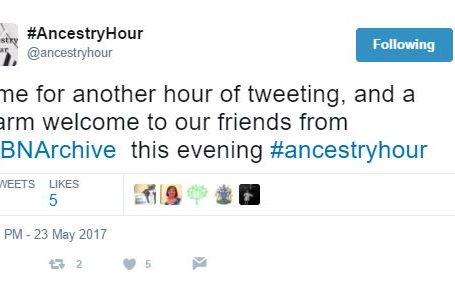This week at The Archive we are delighted to once more welcome an array of very special brand new titles, as we have added 150,218 brand new pages over the past seven days. From a new film title, to a new international one, via some extensive additions to both our regional and national titles, we are bringing you a variety of eclectic and exciting new pages this week.
So read on to discover more about the Kinematograph Weekly and the British Australasian – as well as an early and hauntingly prophetic science fiction film from 1911!
Register now and explore the Archive
We kick off the week’s new additions with specialist film title Kinematograph Weekly. Founded by entrepreneur Edward Thomas Heron (who also published the Talking Machine News) in 1889 as the monthly Optical Magical Lantern and Photographic Enlarger, it was renamed Kinematograph Weekly in 1907 and became an essential trade paper for the film industry.
Kinematograph Weekly | 24 October 1907
Priced at one penny and edited by Theodore Brown, within the pages of the Kinematograph Weekly you could find the latest cinema trade news, reviews, exhibitions and advice. A fascinating resource for historic film fans, you can find reviews of and advertisements for early moving pictures like ‘The Short-Sighted Cyclist’ (promising to be full of ‘rollicking fun and thrills’) and ‘The Dog Police of Paris’ (chronicling the early use of police dogs in the French capital).
Kinematograph Weekly | 21 November 1907
Filled with advertisements for the latest in cinema equipment, offering ‘Who’s Who’ guides for the movers and shakers of the early film industry, plus correspondence and illustrations, the Kinematograph Weekly is truly a treasure trove which chronicles the early days of the cinema industry.
The Kinematograph Weekly published the ‘Kinematograph Yearbook’ in 1914, cementing its place as one of the most important film industry titles in the world. In 1959 the publication switched to the snappier name of Kine Weekly, and the last edition of the historic film title appeared in 1975.
Kinematograph Weekly | 6 June 1912
We move now to look at our new international title – the British Australasian – although strictly speaking this periodical was actually published in London by Messrs Cousins & Co.. First appearing on 2 October 1884, the British Australasian called itself ‘a Newspaper for Merchants, Shareholders, Land Selectors and Emigrants, and All Interested in the Magnitude and Growth of British Interest in Australia, New Zealand, Tasmania and the Western Pacific.’
Essentially, then, a title for colonialists (you can discover other titles relating to the British Commonwealth and the confronting legacy of British colonialism here), the British Australasian contained political, economic and trade news from Australia and New Zealand, as well as featuring maps of places like Sydney Harbour and telegraphs from across the continent.
British Australasian | 23 October 1884
The British Australasian also contains some fascinating insights into emigration; for example, in October 1884 the state of Queensland was offering free passage to ‘Female Domestic Servants of Good Character,’ as well as ‘bone fide’ farm labourers aged between 17 and 30.
Our next new title focuses on somewhere a little closer to home – namely the Winsford Chronicle. Published in the Cheshire town of Winsford, which was famed for its ties to the salt-mining industry, the Winsford Chronicle was established in 1883 and was published every Saturday, also being known as the Winsford and Middlewich Chronicle.
Rounding off our new titles this week is the Retford and Worksop Herald and North Notts Advertiser. A weekly Liberal title, this newspaper was priced at one penny and was first published on 2 March 1889. Under the personal column, the publishers of this new title in March 1889 ask the ‘indulgence of our Readers for any shortcomings that the paper may possess in this very early stage,’ also requesting the ‘assistance which we think will be readily accorded by all Liberals.’
Retford and Worksop Herald and North Notts Advertiser | 30 June 1894
The Retford and Worksop Herald and North Notts Advertiser had been established due to a perceived dearth of Liberal newspapers in the area; other Liberal newspapers had been produced but were short-lived. However, the Retford and Worksop Herald and North Notts Advertiser proved a success, published in the Nottinghamshire market town of Retford, one of England’s oldest boroughs. Featuring advertisements, local and national news, serialized fiction, humourous skits and society news, this publication initially appeared every Saturday before switching to a Tuesday release day.
Meanwhile, we’ve not neglected our existing titles on The Archive this week. We’ve added new years to both the Daily and Sunday Mirror (both with the year 1946 added to our collection), as well as the year 1901 to the Cork Daily Herald. We also have updates to newspapers from the north and south of England, namely to the Halifax Evening Courier and the Eastbourne Chronicle.
Sci-Fi from 1911 – The Aerial Anarchists
In 1911 Walter R. Booth brought the third of his science fiction films – The Aerial Anarchists – to the big screen. Trade periodical Kinematograph Weekly previewed this futuristic and ultimately prophetic new film, describing it to cinema proprietors who may have wanted to show the feature to their audiences.
So what was The Aerial Anarchists about? The Kinematograph Weekly in October 1911 gives us the following description:
This thrilling and amazing film depicts with far more realism than could be conveyed by one pen of the imaginative novelists the horrors of warfare upon society if carried out by means of the latest development of mechanics – Aviation.
Kinematograph Weekly | 26 October 1911
Put simply then, The Aerial Anarchists deals with a potential new type of warfare – bombing from the air – the aggressors in this case being the titular ‘anarchists.’ And Booth, in his ‘Urban Science’ (as it was called then) feature, was probably unaware of how soon his nightmare vision was to come to pass, with England facing German bombing raids just four years later.
And not only did The Aerial Anarchists deal with the threat of a new method of warfare, it also showed advancement in film technology, and thereby, the potential of film as a new method of entertainment. The Kinematograph Weekly writes of the film in October 1911:
There is always room in the picture theatre program for a subject such as this – an excursion into the realm of imaginative fiction. The moving picture can give so much more realistic an impression, than the printed page and the result of the exhibition of the film is to make the show talked about and excite wonder and interest – all of which is good for the pay box.
The bombing of St Paul’s Cathedral | The Bioscope | 19 October 1911
The film was particularly famous (or indeed infamous) for it showed an aerial attack on St Paul’s Cathedral. The Kinematograph Weekly describes how the ‘picture is a series of thrills from beginning to end, but the most extraordinary and vivid incidents are the bombardment of St Paul’s Cathedral from an aeroplane and a railway accident in which a train leaps into a chasm.’
Further detail is given of the railway ‘accident’ here:
The anarchists drop a bomb, which blows up a railway bridge. One train narrowly escapes destruction, but another rushes full speed into the chasm. The rescue scene is very vividly presented and was, we believe, photographed under actual conditions.
Booth’s picture managed to be a mix of the familiar and the futuristic, but all to soon would the future become familiar as his terrifying vision came to pass in the First and Second World Wars. But for the writers in Kinematograph Weekly, the film was destined to be a hit, and was already in ‘great demand’ before its release on 9 November 1911.
New Titles
Title |
Years Added |
| British Australasian | 1884-1900 |
| Retford and Worksop Herald and North Notts Advertiser | 1889, 1893-1897, 1899-1902, 1904-1911, 1913-1929 |
| Winsford Chronicle | 1942-1958, 1960-1963 |
| Kinematograph Weekly | 1904-1914 |
Updated Titles
This week we have updated five of our existing titles.
You can learn more about each of the titles we add to every week by clicking on their names. On each paper’s title page, you can read a FREE sample issue, learn more about our current holdings, and our plans for digitisation.
Title |
Years Added |
| Daily Mirror | 1946, 1976, 1997 |
| Sunday Mirror | 1946, 1953, 1956, 1964, 1976, 1986 |
| Halifax Evening Courier | 1931 |
| Eastbourne Chronicle | 1932-1949, 1951 |
| Cork Daily Herald | 1901 |
You can keep up to date with all the latest additions by visiting the recently added page. You can even look ahead to see what we’re going to add tomorrow.












